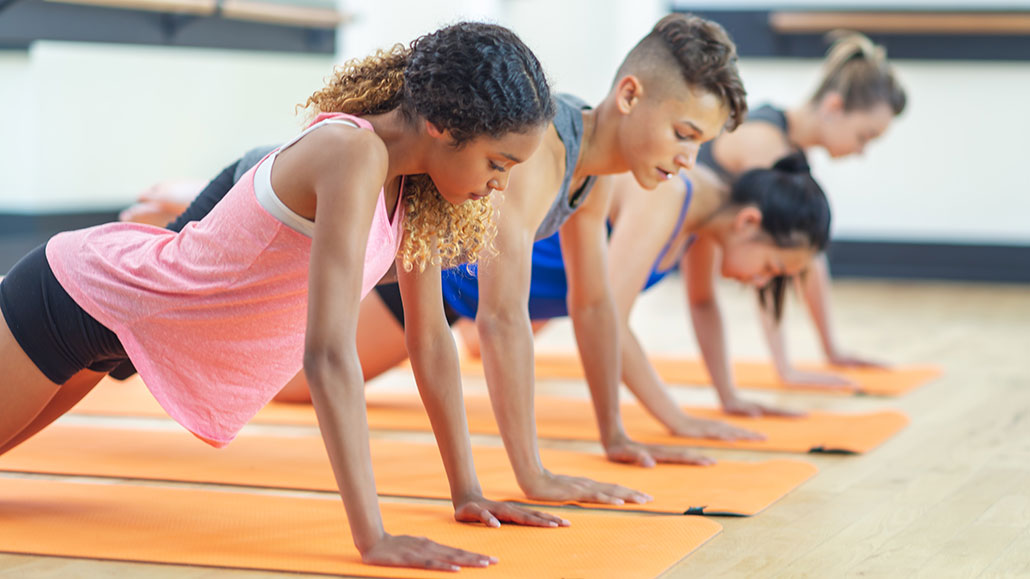Active bodies build stronger brains
Brain scans show that physical activity during early adolescence boosts brain structure and function

A new study links physical activity, particularly aerobic exercise, to healthier brains in early adolescence.
FatCamera/E+/Getty Images
Staying spry and fit can help people stay sharp in their golden years. Now, a new study finds getting plenty of exercise is linked to better brain health in adolescence, too.
During puberty, the brain matures dramatically. Yet it’s also a time when a kid’s physical activity tends to plummet. Compared to young children, adolescents lead more sedentary lives. One reason: Many spend more time in front of screens.
The new study looked at the effects of exercise on brain health in 12-year-olds. Researchers scanned their brains using a non-invasive technology. It’s called magnetic resonance imaging (MRI). Such scans reveal information about the brain’s structure and function. The researchers analyzed the MRI images alongside other health measures.
Heidi Johansen-Berg is a neuroscientist at the University of Oxford in England. “Physical activity and aerobic exercise have a much more widespread effect” on brain processes than previously thought, she told reporters at a virtual news briefing. The Society of Neuroscience convened the briefing about her team’s work on January 12.
Her study enrolled 26 girls and 24 boys. Past studies had looked at how a single bout of exercise affected someone’s performance on specific tests. Those tests might ask how well someone remembered images or recalled locations of objects on a screen. And if that research used MRI, the scans likely focused on the hippocampus. That’s the brain’s memory hub, notes Piergiorgio Salvan. He’s a brain scientist at the University of Oxford.
He and Johansen-Berg designed a broader study. They wanted to understand how fitness and exercise relate to brain-wide health. Explains Salvan, “The idea was to ask, ‘what’s going on in the rest of the brain?’”
A holistic approach
For seven days before the testing, each kid wore a wrist accelerometer (Ak-sel-ur-AHM-eh-tur). This electronic motion sensor tracked their activity over the week. The researchers also gathered basic information, such as a recruit’s gender and stage of puberty. They asked about each kid’s mental health and also recorded their height, weight, blood pressure and heart rate.
Once in the lab, the kids hopped on stationary bikes and pedaled as fast as they could. The researchers measured each cyclist’s maximum rate of oxygen consumption. This common indicator of aerobic fitness is known as VO2 max.
Before the cycling, each participant watched a wildlife movie while lying in an MRI scanner. The movie helped them remain still as the machine took pictures of their brain. Those images pointed to which nerve networks were active. And the researchers could see how those networks connected. “You can literally visualize what the brain is doing,” Salvan says.
The researchers measured how much blood entered various brain areas and how fast it flowed. Scientists call that flow perfusion (Per-FEW-zhun). Kids with higher VO2 max had stronger perfusion throughout their brains. Perfusion was highest in endurance athletes, such as runners and rowers. Sedentary or overweight kids had less perfusion.
The researchers also studied the brain’s so-called white matter. Its nerve bundles branch like “‘highways of the brain’ that connect different regions,” Salvan notes. Kids who were more fit had more glial (GLEE-ul) cells in their white matter. These cells provide structural and metabolic support.
The Oxford group described its findings February 3 in the Journal of Neuroscience.
What to make of the findings
Amanda Szabo-Reed is an exercise psychologist. She works at the University of Kansas Medical Center in Lawrence. A key aspect of this study was its use of “multimodal” MRI testing, she observes. She explains that this means the Oxford team “used many methods” to study the brain, not just one single measurement.
“Being physically active is linked to better brain health,” she concludes. But there may be other factors involved, too. For instance, she explains, the study could not prove that physical activity causes better brain health. It could only show that these features were correlated.
The study also does not indicate whether an active lifestyle translates to better grades. For example, she says, the research didn’t measure if the kids who were more fit did better on classrooms tests.
Still, the study suggests adolescents should shun the couch-potato life. “Be physically active,” Szabo-Reed says. “It’s going to be good for your brain.”







